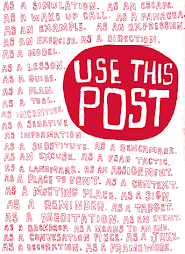 George Siemens (@gsiemens) George Siemens (@gsiemens)12/18/12 8:55 PM "there is time and room..to invent another model [mooc], a responsible and relevant one for the challenges of our time" globalhighered.wordpress.com/ |
Education brands are investing in digital platforms for maintaining the traditional way of learning for the benefit of the same big ones, this. “If we want things to stay as they are, things will have to change” as Lampedusa told us in his famous novel The Leopard. This is how digital technology is perversely used and how we miss their powerful enticement for innovation in education processes.
our myth.. if we're changing ... we're good.
if it's shinier ... we're good.
let's not moot mooc..
let's not moot mooc..
interesting where minds are going (perhaps where actuality is going) with moocs.
interesting the things talked about as lacking in this article are the very essence of their beginnings several years ago..
no?
Back to Cormier, the guy who coined the term “MOOC” back in 2008, long before Stanford’s massively-hyped online artificial intelligence class. That’s an important piece of education technology history that’s been overlooked a lot this year as Sebastian Thrun and his Stanford colleagues have received most of the credit in the mainstream press for “inventing” the MOOC.
But MOOCs have a longer history, dating back to some of the open online learning experiments conducted by Cormier, George Siemens, Stephen Downes, Alec Couros, David Wiley and others. Downes and Siemens’ 2008 class "Connectivism and Connective Knowledge,”for example, was offered to some 20-odd tuition-paying students at the University of Manitoba, along with over 2300 who signed up for a free and open version online.
In July, Downes made the distinction between “cMOOCs,” the types he has offered, and “xMOOCs,” those offered by Udacity, Coursera, edX and others. The terminology is very useful to help distinguish between the connectivist origins of MOOCs (and the connectivist principles and practices of open learning and online networks) and the MOOCs that have made headlines this year (with their emphasis on lecture videos and multiple choice tests). While cMOOCs are strongly connectivist and Canadian, xMOOCs, as Mike Caulfield contends, exist “at the intersection of Wall Street and Silicon Valley.”






































